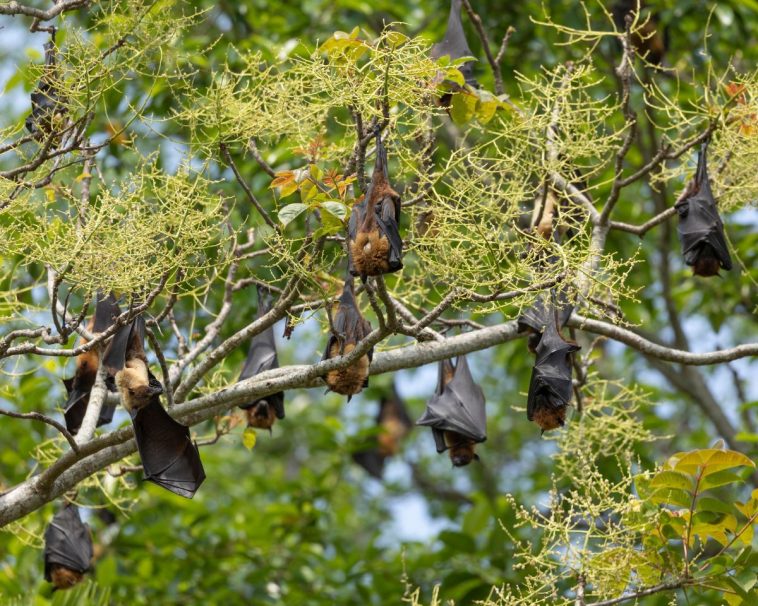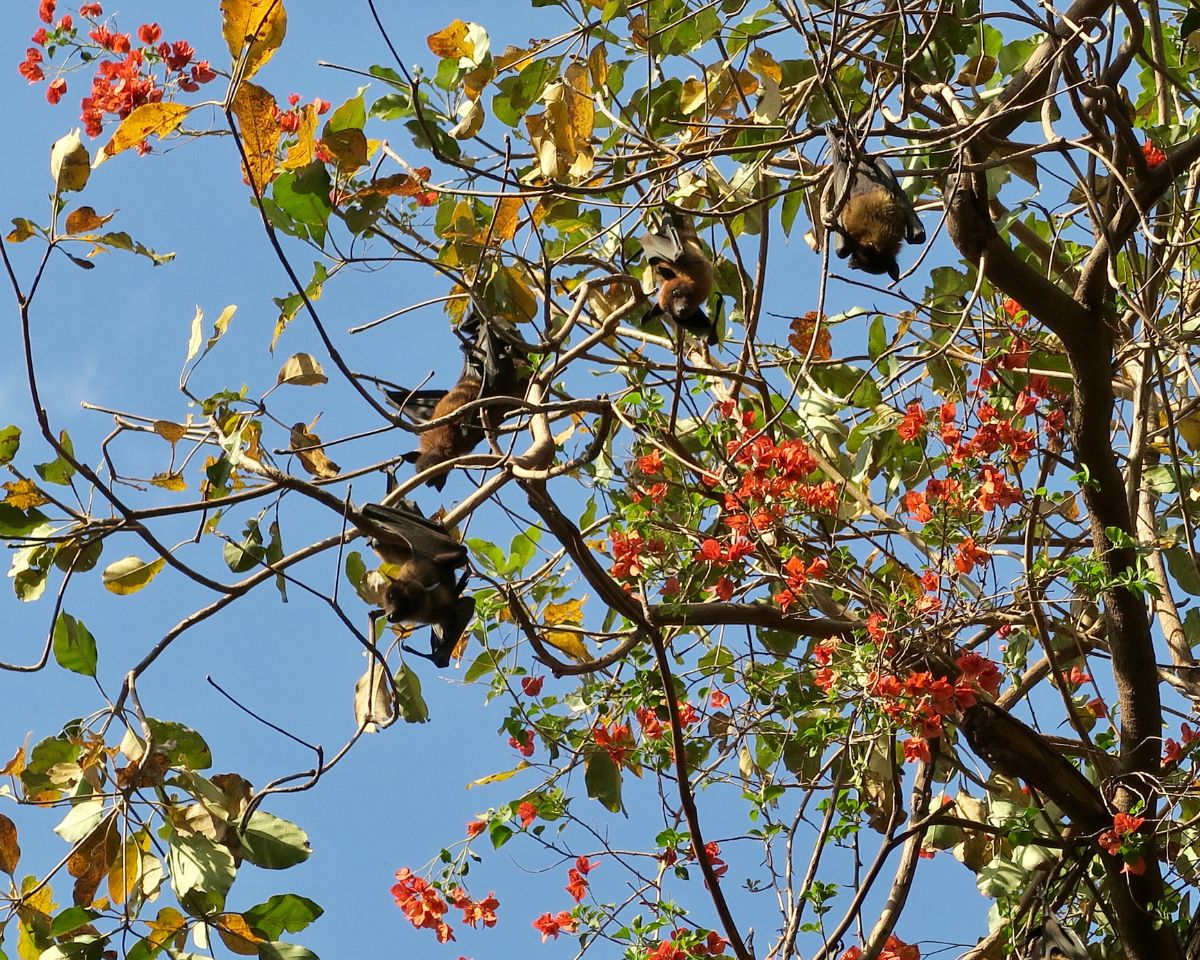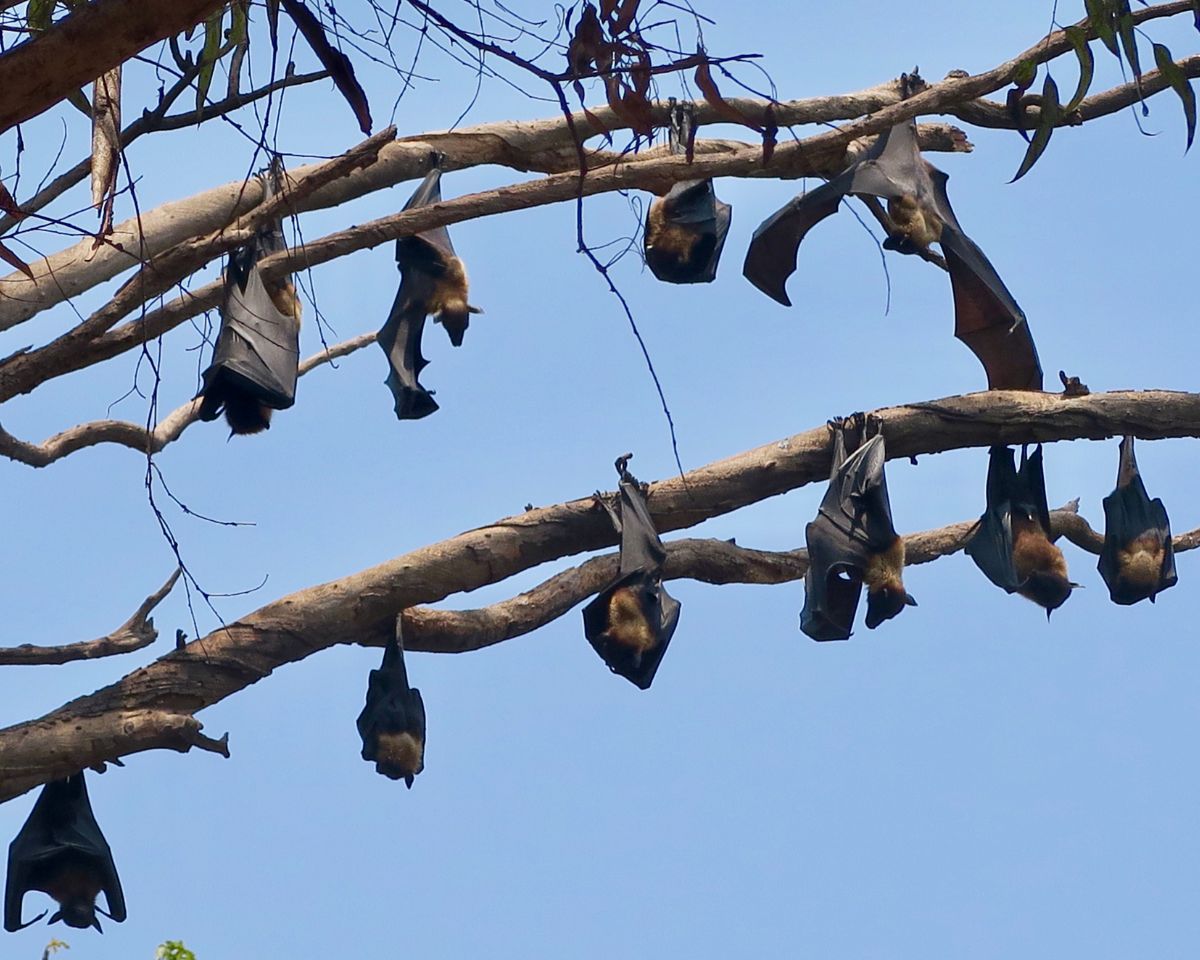Bat Roosts

Bat roosts are places where bats rest or sleep during the day, typically in dark and sheltered locations such as caves, tree hollows, and buildings. These roosts provide important habitats for bats, allowing them to conserve energy and avoid predators.
Bats love to roost in trees because they offer a variety of habitats that cater to their needs. Trees are abundant in most regions, making them a popular choice for bats. Bats can choose to roost in foliage, bark crevices, or tree cavities.
Buildings are becoming important homes for bats as natural roosting sites like trees are disappearing. Bats prefer buildings with cracks and crevices, such as attics and wall interiors, to rest during the day and avoid predators.
Some bat species choose to create maternity colonies in caves, where they give birth to and care for their young. These caves provide a safe haven from predators and human disturbance. Additionally, bats are crucial to the ecosystem as they serve as pollinators, pest controllers, and seed spreaders.
Bats often use rock crevices as roosts when caves are not available, providing a safe and secure shelter from predators during daylight hours. These crevices offer optimal roosting conditions due to their stable temperature and protection from harsh weather.
Mines offer bats a great place to call home, as they provide a consistent temperature, protection from predators, and high humidity. Additionally, mines are often located near water and have an abundance of insects, which are a crucial part of a bat’s diet.
Bats find optimal shelter in bridges due to their numerous entrances and crevices, allowing them to easily maneuver in and out while finding seclusion and defense from predators.
Barns are great places for bats to live because they have lots of room and protect the bats from predators. Bats like to hang out in the nooks and crannies of barns, like under the roof, behind loose boards, and in gaps between tiles.
Bats often choose attics as a comfortable and secure place to rest, but their presence can cause harm to the structure and health of the home. They can damage insulation, wiring, and other materials, and their droppings can create unpleasant smells and spread diseases.
Chimneys may appear inviting to bats, but they actually present dangers to both the animals and the home.
Bats choose roosts that shield them from wind and rain, and shrubs’ thick foliage provides just that. These leafy havens also protect bats from predators and are often found near water sources, which makes them an excellent spot for hunting insects.
Bat Roosts in Trees
Tree roosts for bats constitute one of the most intriguing ecosystems that you can delve into. Trees are plentiful in most regions, making them a favored roosting location for bats. Bats exhibit diverse roost preferences and the assortment of habitats that trees offer cater ideally to their needs.
Bats can select roosts in the foliage of trees, within bark crevices, or tree cavities. Tree cavities are particularly preferred by bats as they provide a secure and stable environment. These cavities, either formed naturally or crafted by woodpeckers, offer an ideal sanctuary for bats to rest and reproduce.
Bat Roosts in Buildings
Buildings are becoming progressively vital roost sites for bats due to the dwindling availability of natural roosting sites such as trees. Given the right conditions, your home could offer an ideal sanctuary for these nocturnal creatures.
Bats favor buildings that have cracks and crevices allowing easy access to shelter. They’re known to roost in locations such as attics, wall interiors, and even chimney flues. These spaces provide them with a warm, secure place to rest during daylight hours, sheltered from the watchful eyes of predators.
So, if you encounter scratching sounds within your walls or spot droppings around your house, it might be time to examine your home for potential bat roosts. Remember, bats play a crucial role in our ecosystem. Therefore, should you discover them in your home, it’s recommended to contact a professional for their safe removal.
Bat Roosts in Caves

Certain bat species establish maternity colonies in caves, where female bats bear and nurture their offspring. These caves also afford protection from predators and human interference. Bats play an indispensable role within the ecosystem, acting as pollinators, pest regulators, and seed dispersers.
However, they confront numerous threats, including habitat loss and destruction. As such, it’s crucial to safeguard and preserve bat roosts, particularly those located in caves. We must work to prevent human disruptions, such as spelunking, mining, and development, which can disturb the bats’ natural habitats and inflict substantial harm on their populations.
By initiating protective measures for bat roosts within caves, we can ensure the ongoing prosperity of these intriguing creatures and their essential role within the ecosystem.
Bat Roosts in Rock Crevices
Bats are renowned for utilizing rock crevices as roosts, particularly when caves are scarce.
Such roosts offer a safe and secure sanctuary for bats to rest during daylight hours and shield themselves from predators. Rock crevices can deliver optimal roosting conditions for bats, thanks to their stable temperature and protection from harsh weather.
Bats commonly select the following types of rock crevices as roosts:
- Horizontal fissures with protective overhangs
- Vertical slits with a small opening at the summit
- Crevices with multiple entry points for roosting.
Bats can inhabit these roosts for extended periods, occasionally even throughout the year.
As you investigate rocky terrains, it’s crucial to exercise caution and respect towards bat roosts nestled within rock crevices. Any disturbance to these roosts could negatively impact bat populations and the ecosystems they inhabit.
Bat Roosts in Mines
Mines present a favorable habitat for bats due to their stable temperatures, high humidity, and shelter from predators.
Mines are typically situated near water bodies and boast a plentiful supply of insects, a staple in the bat diet. Bats display various roost preferences, with the mine’s characteristics often determining its potential occupants. For instance, certain bat species favor horizontal mines with low ceilings, while others are drawn to vertical mines featuring high ceilings.
Some bat species have a preference for mines encompassing multiple chambers, whereas others are drawn toward single-chamber mines. Thus, the mine’s structure, orientation, and the presence of other bats can significantly influence bats’ roosting preferences. Overall, mines serve as pivotal habitats for bats, and their preservation is integral to maintaining the ecosystem’s bat species diversity.
Bat Roosts in Bridges

Bridges, due to their numerous entrances and crevices, can offer optimal shelters for bats. They can conveniently maneuver in and out through the gaps in the structure, simultaneously finding seclusion and defense from predators.
Nonetheless, the existence of bat roosts in bridges can occasionally present a complication for human endeavors like construction and maintenance of the infrastructure. It is, therefore, critical to identify and manage these roosts in a manner that minimizes disruption to the bats, while also ensuring the safety of people who utilize the bridge.
Potential solutions may encompass the installation of bat boxes in the vicinity or the avoidance of construction activities during the bat breeding season. By acknowledging the importance of bat roosts in bridges and implementing suitable measures for their protection, we can contribute to preserving these remarkable creatures and their indispensable role in the ecosystem.
Bat Roosts in Barns
Barns provide an ideal environment for bats, offering abundant space and safeguarding them from predators. These creatures often roost in the hidden corners of barns, such as beneath rafters, behind loose boards, and within gaps among roof tiles.
Here are four intriguing reasons highlighting the significance and fascination of bats residing in barns:
- Bats serve as extraordinary pest controllers. A single bat has the capability to devour up to 1,000 mosquitoes within an hour, making them a valuable asset for farmers and homeowners.
- Bats play an integral part in pollination, assisting in the dispersion of seeds and pollen for a variety of plants, including numerous crops.
- Several bat species are endangered, underlining the importance of preserving their roosting sites and habitats.
- Bats are intriguing creatures, equipped with unique adaptations like echolocation that enable them to navigate seamlessly in total darkness.
So, the next time you’re in the vicinity of a barn, take a moment to recognize the critical role bats play within our ecosystem and appreciate them for the fascinating creatures they truly are.
Bat Roosts in Attics
Attics offer a cozy and safe haven for bats to roost, but their presence can lead to structural deterioration and health hazards.
Bats can inflict damage on your attic’s insulation, wiring, and other materials, and their droppings can emit foul odors and potentially transmit diseases. Nonetheless, bats also serve an integral role in curbing insect populations and pollinating plants, solidifying their importance within the ecosystem.
If you find bats residing in your attic, it’s critical to implement measures that ensure their safe and humane exclusion. This process involves blocking all possible entry points, like roof gaps or vents, while allowing any bats already inside to exit.
It’s crucial to avoid completely sealing the attic, as it may trap bats inside, leading to their demise. Instead, consider setting up bat boxes or alternative roosting sites nearby to offer a new home for the bats.
By implementing these measures, you can safeguard your property while also promoting the preservation of these essential creatures.
Bat Roosts in Chimneys
While chimneys might seem like an attractive roost for bats, they can, in fact, pose risks to both these winged creatures and your household.
Bats could become ensnared in the chimney, meeting an unfortunate end that may result in unpleasant smells and potential health hazards. Furthermore, an accumulation of bat guano in the chimney can lead to blockages, potentially incurring costly repairs.
To deter bats from establishing roosts in your chimneys, consider installing a chimney cap or screen to bar their entry. Regular inspection of your chimney is also advisable to ensure there are no gaps or holes that could serve as access points for bats.
If you happen to discover bats residing in your chimney, refrain from attempting their removal yourself, as it can pose a danger to both you and the bats. Instead, reach out to a professional wildlife removal service that can safely and humanely evict the roosting bats and implement measures to prevent their return.
By adhering to these straightforward steps, you can sustain a comfortable and secure environment for both you and the bats.
Bat Roosts in Shrubs
Bats favor roosts that offer shelter from wind and precipitation, and the dense foliage of shrubs fits this bill perfectly. These leafy sanctuaries offer protection from harsh weather conditions and serve as a hideaway from potential predators.
Shrubs are frequently situated near water sources, making them an ideal location for bats to take residence and hunt for their insect prey.
So, the next time you’re appreciating the aesthetic allure of your shrubs, bear in mind that they could also be hosting some of nature’s most intriguing inhabitants.









